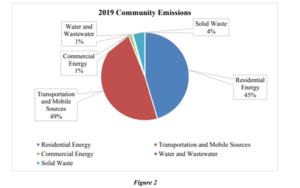– Are you wondering how to save money on your household’s garbage collection services?
The City of Piedmont maintains an exclusive Franchise Agreement with Republic Services to provide solid waste, recycling, and organic collection services in the City. New service rates became effective July 1, 2021.
Here are ways to reduce the cost:
- The Annual Pre-Payment Discount allows single family customers to voluntarily pay for one (1) year of service with the twelfth (12th) month of service provided at no charge. That is 12 months of service for the cost of 11 months of service. Enroll in the discount by contacting Republic Services.
- Service rates are based upon the size of your garbage cart. Collection service for recyclables and organics is unlimited in volume and provided at no additional cost. By recycling more and generating less garbage, you may be able to switch to a smaller garbage cart to save money.
- But be sure to choose the right container for your garbage needs. Charges will be assessed for overflowing garbage, garbage set out beyond your service level, or allowing garbage to accumulate on your property. Recycling carts and organics carts contaminated with garbage will not be serviced. Call Republic Services at (800) 320-8077 to order additional or larger carts for recyclables and organics.
- On-premises (backyard) collection service costs more than curbside service. Switching to curbside service saves approximately $46 per month. With curbside collection, the customer is responsible for placing the wheeled carts at the curb on their regular collection service day and returning the carts to their storage location promptly after collection. With curbside collection, carts are not limited in size as they are with on-premises collection.
- Physically disabled residential customers with no able-bodied household members are eligible to receive on-premises (backyard) collection at curbside rates. The maximum cart size available to on-premises collection is 35 gallons. To receive the discount, the account holder must fill out the application for exemption to curbside placement of carts, provide a doctor’s certification that the customer is unable to move the carts to the curb or provide a copy of a valid California Disability Placard, and verify that there are no able-bodied household members that can move the carts to the curb.
Republic Services can be contacted about these services via phone (800-320-8077), email (piedmont@republicservices.com), or online (https://www.republicservices.com/municipality/piedmont-ca).
To learn more about Piedmont Evergreen, the City of Piedmont’s outreach and education program for waste reduction, recycling, and composting, visit the City’s website page https://piedmont.ca.gov/services___departments/planning___building/recycling_organic_waste_garbage
Alyssa Dykman, City of Piedmont, Sustainability Program Manager 7/12/2021




